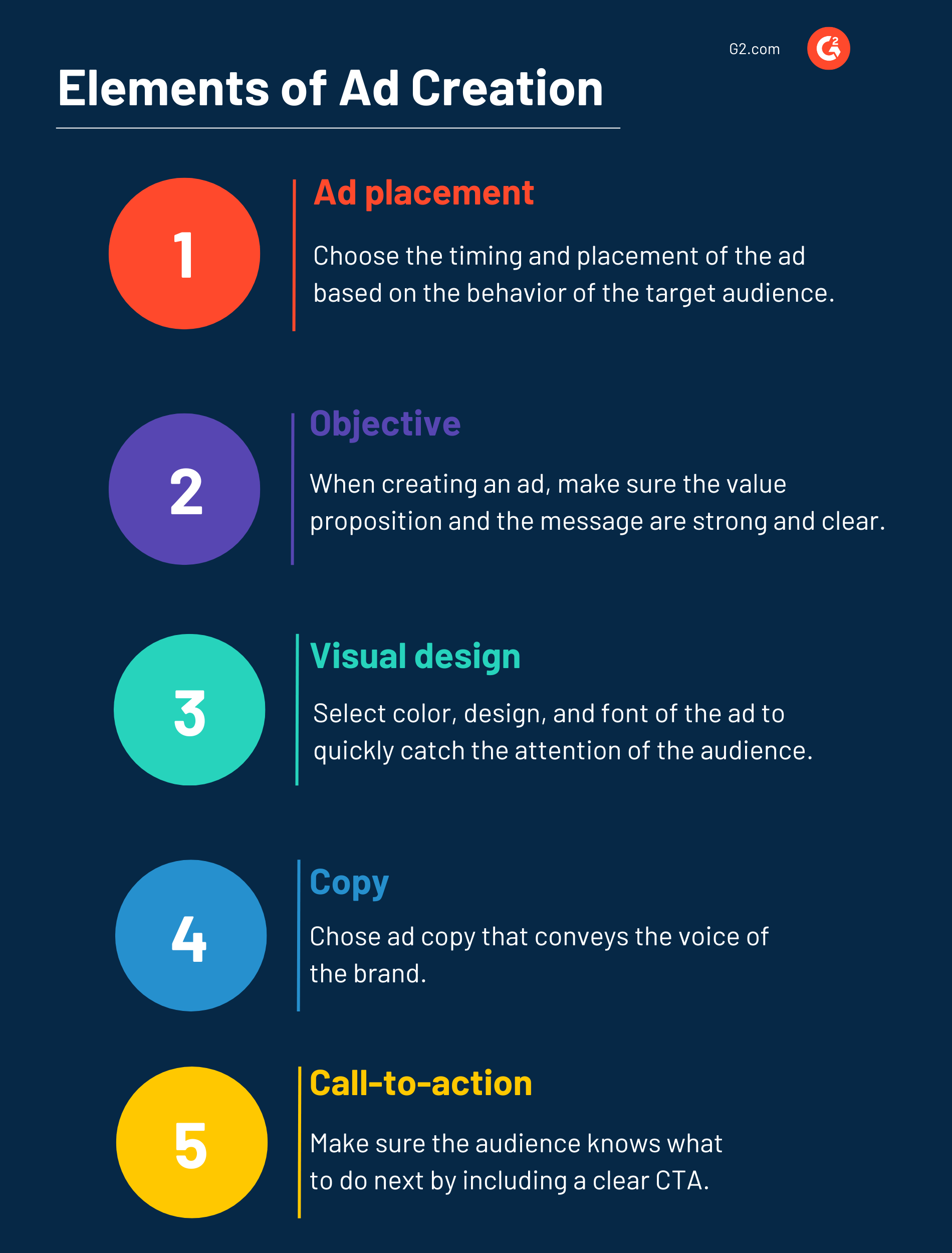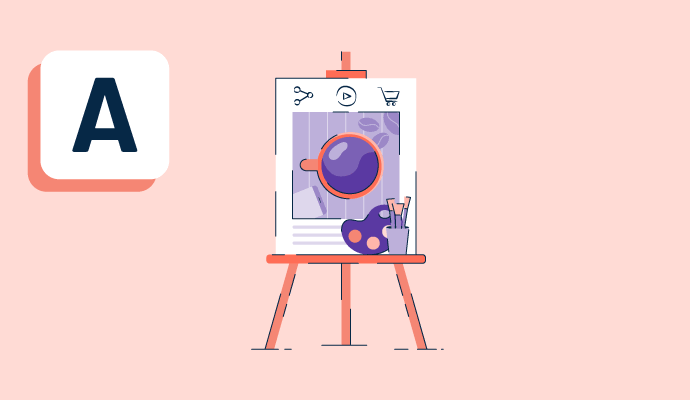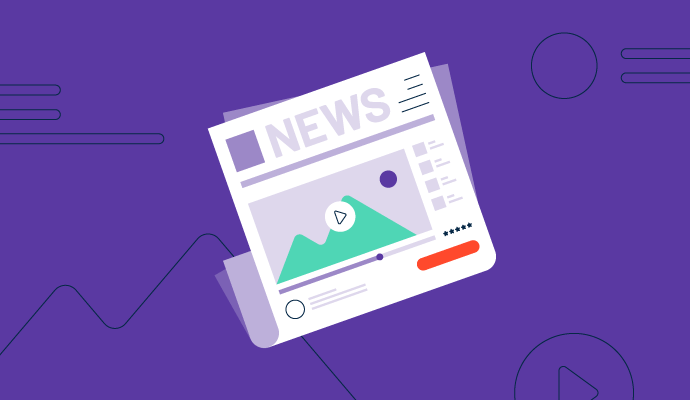What is ad creation?
Ad creation is the process of developing advertisements to promote a company or its products. Once created, ads can help a business promote a brand, generate leads and sales, and shape its image.
Many types of advertisements can be created. Traditional print ads typically appear in magazines, newspapers, directories, mailers, and brochures. Digital ads are shown on television and the internet. Types of digital ads include image ads, video ads, text ads, and search ads.
Once a company has a marketing strategy in place, it can begin to work on creating ads. In today’s digital world, software exists to help with both ad design and social media advertisement creation. Social media advertising software assists companies in placing ads on sites such as Facebook, Twitter, and LinkedIn to quickly and easily design and create personalized advertisements.
Ad creation steps
There are eight main steps involved in effective ad creation. These steps are:
- Identify a target customer. Be as specific as possible about who the audience is. Many companies create a “buyer persona,” a profile of a target customer based on research and data. For example, if you are a home security company, a target customer might be a single person who lives in a high-crime area or a high-income family in a suburb.
- Conduct market research. Thoroughly research the target audience’s demographics, preferences, and habits. With this audience analysis, a business can create better ad campaigns.
- Select an ad type. Multiple types of ads exist across various platforms. For example, on some social network platforms, a company can create image ads, video ads, text ads, carousel ads, or banner ads. Choose an ad type to appeal to the target customer.
- Craft a message. A powerful message establishes a brand as a unique voice in the marketplace. Consider how to make the message memorable and a driving force to achieve campaign objectives.
- Choose creative elements. The right promotional text, images, and videos will grab the audience’s attention. A company may want to enlist the help of a copywriter and a graphic designer to create a custom advertisement.
- Add a call-to-action. The call-to-action (CTA) tells the customer what to do next. For instance, the CTA can direct the customer to click to learn more or call to purchase. A CTA should contain clear, concise, and persuasive language.
- Publish the ad. Once the ad has been created, launch the ad across intended platforms.
- Monitor and assess performance. Finally, a crucial step in the ad creation process is monitoring the ad’s performance. Analyze whether it is meeting campaign objectives, and make changes to the ad as necessary.
Basic elements of ad creation
A few guiding principles are important to keep in mind when creating ads that appeal to the audience and drive sales.

These elements include:
- Ad placement: For an ad to be successful, it must be seen or heard by as many potential customers as possible. Consider the target customer’s likes, habits, and patterns. Then choose a platform—and timing—accordingly.
- Objective: The best ads quickly convey their message. When creating an ad, make sure the value proposition is strong and clear.
- Visual design: The design and layout of visual ads should catch the audience’s attention quickly. Select colors, images, fonts, and media that will appeal to the viewers and draw them into the ad.
- Copy: Word choice is important in ad creation. The ad’s copy should convey the brand’s voice. Make each word count and write in a voice suitable for the brand.
- Call-to-action: As stated, an ad isn’t complete without a CTA. Make sure the audience knows what to do next. This may be a button to click or a number to call.
Benefits of ad creation
With time and effort, ad creation can lead to many benefits for a company in brand recognition and reach and product sales. Notably, ad creation:
- Increases brand recognition. Creating and publishing ads helps increase brand awareness in the marketplace. Every time viewers see an ad, the brand’s name, message, and logo becomes more ingrained in their minds.
- Helps showcase new products and services. When a company starts offering new products or services, it will often design ads to let the target audience know. Showcasing new products and services is important for both gaining new customers and piquing the interest of existing ones.
- Attracts new customers. Without awareness of a product or service, potential customers may not know that the solution exists. Ad creation lets audiences know what a company has to offer.
- Boosts sales. Because ad creation helps a business attract new customers, it can also increase sales volume. A well-designed ad with smart placement can increase a company’s return on investment (ROI).
- Makes a company stand out from competitors. A product from one brand might have important features that set it apart from similar products in the marketplace. Ad creation can help a company highlight these features.
Ad creation best practices
To make sure that ad creation is successful, it is important to keep best practices in mind to ensure the best return on investment. Some of these best practices include:
- Focus on goals. Keep the campaign’s objectives at the forefront. Create ads that will result in the company’s desired outcome.
- Favor minimalistic design. Many consumers today skim ads in just seconds. Avoid wordy, complicated language and cluttered visuals.
- Stay on-brand. Consider using brand colors, fonts, and messaging that the audience will identify as fitting with the company’s image.

Kelly Fiorini
Kelly Fiorini is a freelance writer for G2. After ten years as a teacher, Kelly now creates content for mostly B2B SaaS clients. In her free time, she’s usually reading, spilling coffee, walking her dogs, and trying to keep her plants alive. Kelly received her Bachelor of Arts in English from the University of Notre Dame and her Master of Arts in Teaching from the University of Louisville.




















